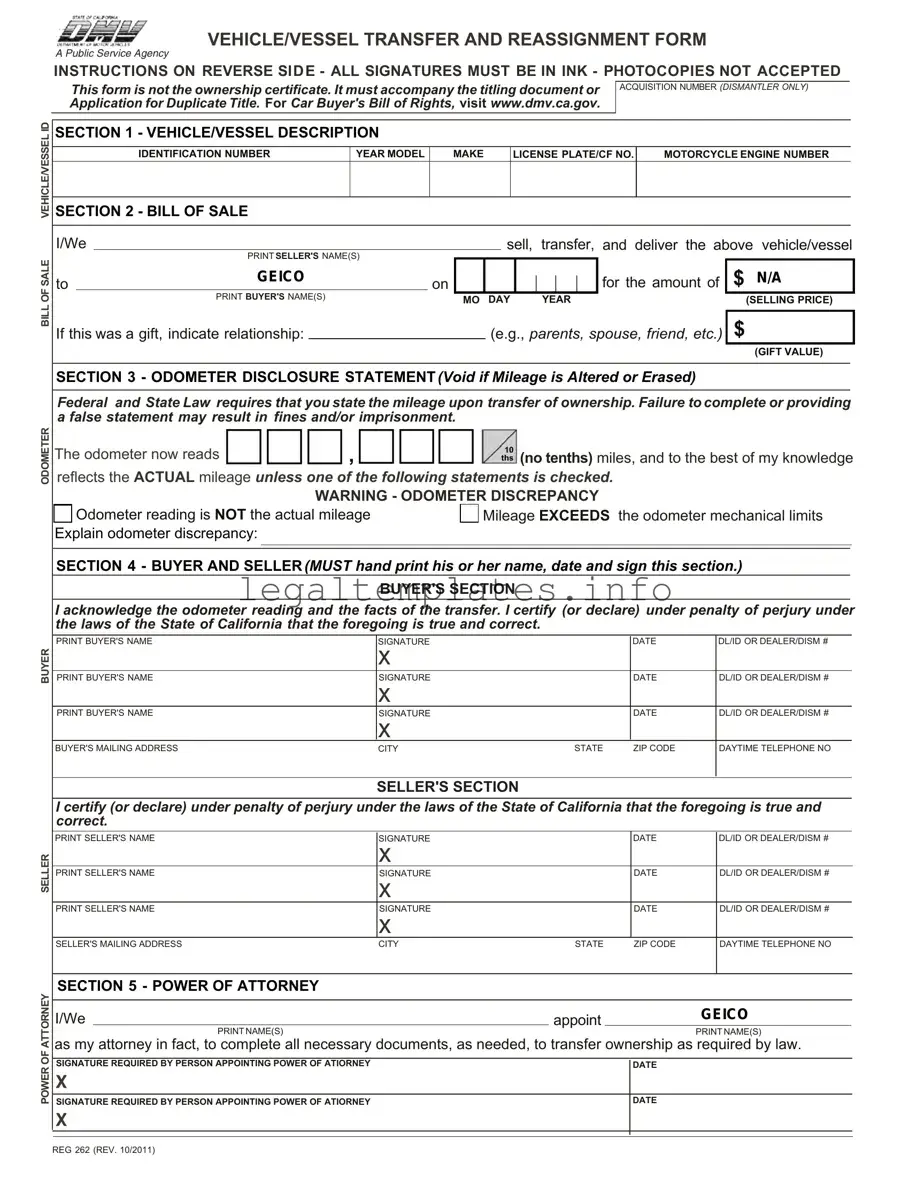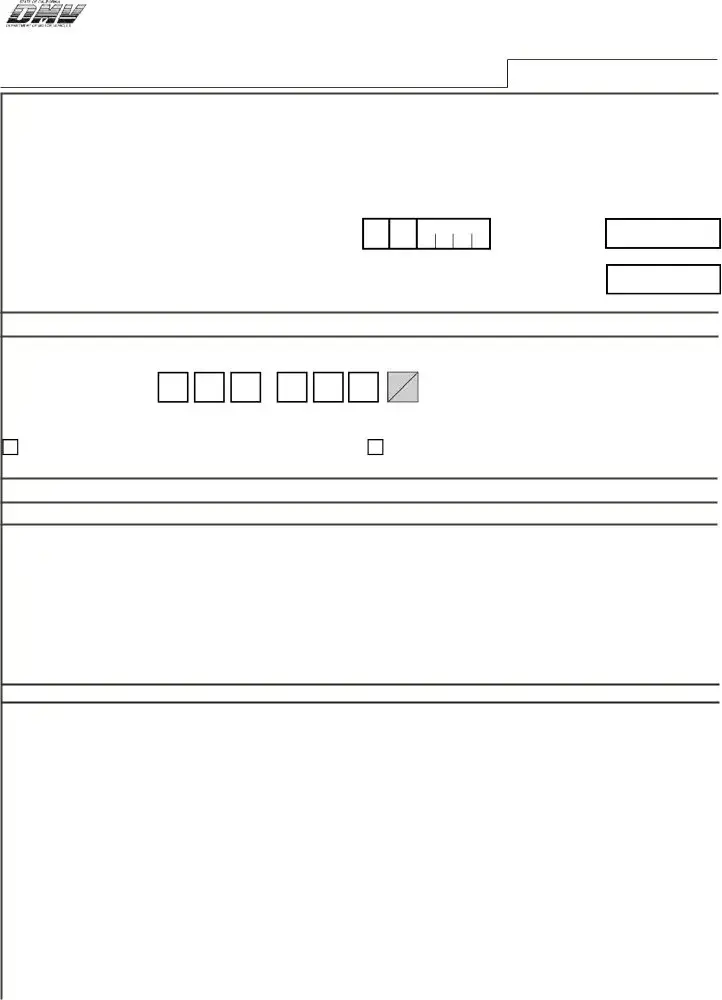Filling out forms required by the DMV can be daunting, especially the California Form REG 262, their Vehicle/Vessel Transfer and Reassignment Form. Here are ten mistakes that are commonly made on this form, often complicating what should be a straightforward process.
Firstly, all signatures must be in ink, a detail that can be overlooked. Using a pencil, or even printing, then signing digitally, will invalidate the form. This traditional rule is strictly enforced, highlighting the importance of physical documentation in these transactions.
Another common error occurs in Section 1, the Vehicle/Vessel Description. Every detail from the Identification Number to the License Plate/CF No. must be filled out accurately. Mistypes here can lead to confusion over the vehicle’s identity, potentially complicating legal ownership or responses to recalls.
In Section 2, the Bill of Sale, accurately reporting the sale amount or clearly stating if the vehicle was a gift is crucial. Misreported figures or unclear gift declarations can affect tax implications and legal interpretations of the transfer.
The Odometer Disclosure Statement in Section 3 is another critical part of the form. Failing to report the mileage correctly, or altering it after the fact, can void the form and could lead to legal penalties. This is a federal requirement, not just a state one.
Ensuring that every required party signs in Section 4 is a must. Whether it's the buyer, seller, or both, missing signatures will render the form incomplete. This section’s requirement for the hand-printed name, date, and signature is often missed in the confusion of sale details.
Another mistake can be found in not accurately handling co-ownerships. If the vehicle is co-owned "AND" requires both parties to sign, a single signature won’t suffice. Conversely, understanding that if ownership is joined by "OR," only one party needs to sign can save time and frustration.
When it comes to the Power of Attorney in Section 5, failing to assign someone correctly if you're unable to carry out the transaction yourself can halt the entire process. This section cannot be completed by power of attorney for odometer disclosure, a fact often overlooked.
A common yet simple error occurs when people fail to use blue or black ink as required. Though it may seem trivial, documents can be rejected outright for this reason, leading to delays in what might be urgent transactions.
Not keeping a photocopy of the completed form is another oversight. While original documents are necessary for processing, having a photocopy can be crucial for personal records, especially if disputes arise later.
Lastly, not thoroughly reading the instructions or consulting the Car Buyer’s Bill of Rights and relevant brochures available on the DMV website can lead to misconceptions and mistakes not only in filling out Form REG 262 but also in understanding the rights and responsibilities entailed in vehicle transactions.
Addressing these common errors can streamline the process of transferring vehicle ownership, ensuring that both parties are protected and the transition is as smooth as possible. Given the legal implications of these documents, taking the time to review and complete them carefully is time well spent.

